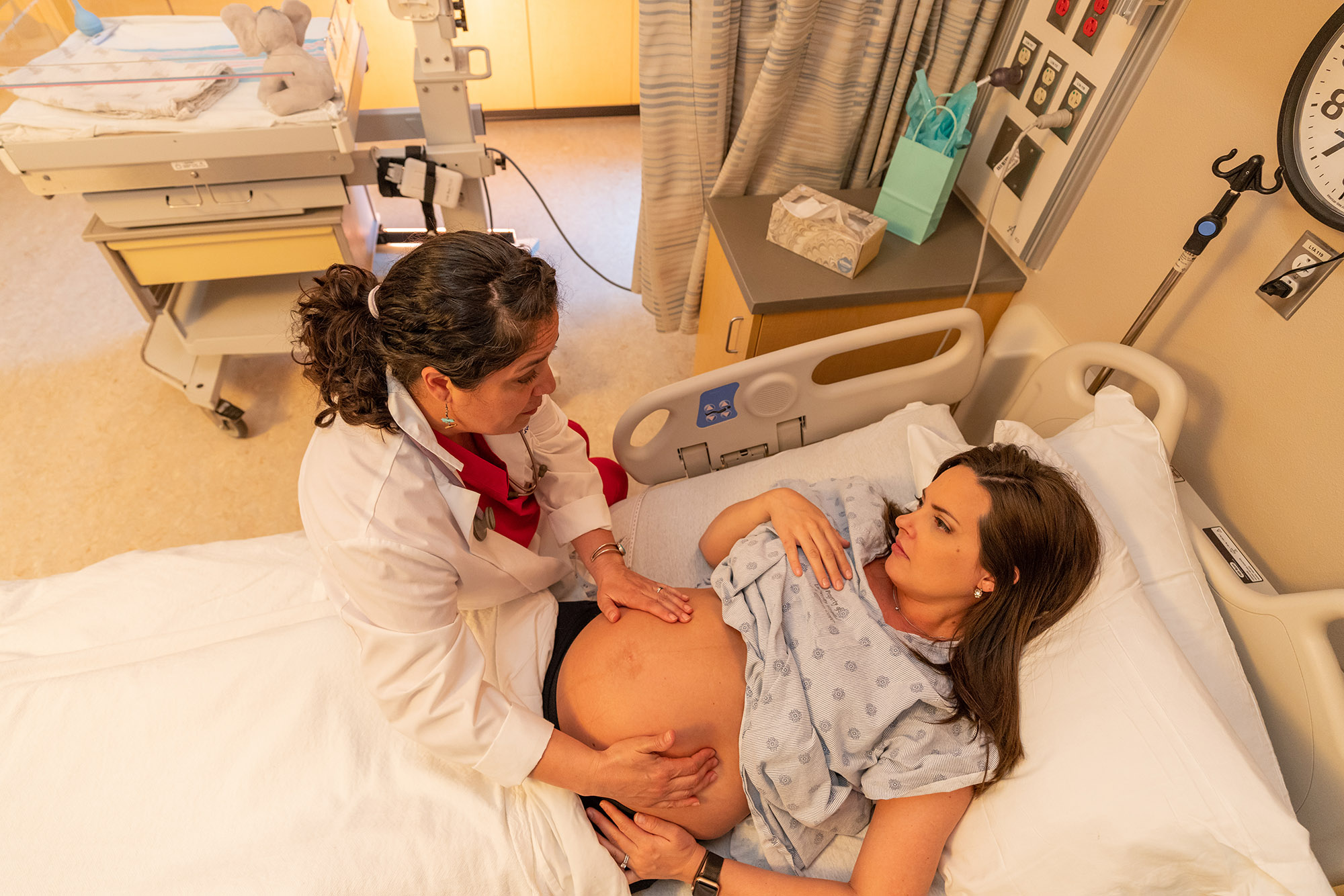Many people think there are two ways to give birth: vaginally or by cesarean section (C-section). And while that is generally true, there is a third option: assisted delivery.
This is when a doctor uses forceps or a vacuum pump to give you a little extra help while you are pushing during childbirth.
Forceps look like salad-serving spoons or tongs, and the vacuum looks like a small plunger. The devices might look strange, but they can be useful if:
- The baby is having trouble coming out.
- The baby is breech (head-up instead of head-down).
- You are exhausted after many hours of pushing.
Assisted delivery is also called operative vaginal birth. About 3% of women in the U.S. give birth this way. For some patients, forceps or vacuum can help them avoid a C-section.
The UNM Women's Health team is trained in assisted delivery and has specific credentials to use vacuum and/or forceps. Before you go into labor, talk with your provider about their experience with forceps and vacuum. Let’s talk about how each option works and when we might recommend them.
How forceps and vacuum delivery work
Forceps and vacuum do not pull your baby out. They help guide your baby while you push. Your provider will not use either method without your consent. Situations where an assisted vaginal delivery may be recommended are:
- You have been pushing and feel exhausted to the point that you would benefit from some assistance.
- You have been pushing and the baby is low enough but not making continued progress moving down the birth canal.
- The baby’s heart rate status is concerning, and an assisted delivery would help get baby out more quickly.
If you and your provider decide to use assisted delivery, we will help you understand every step of the process. To use assisted delivery, your:
- Cervix must be fully dilated
- Bag of waters must be broken
- Baby's head must be at least halfway or more down the birth canal
Your provider may suggest that you take IV pain medication or nitrous oxide if you haven’t already had an epidural.
Forceps
We gently insert the "spoons" into the vagina on each side of the baby’s head. The spoons will cup the baby's face. During contractions, we’ll ask you to push. We will use the forceps to guide the baby's head out.
Vacuum device
We will place the soft cup of the vacuum on the baby’s head. A small pump creates a little bit of suction. As you push, we guide the baby’s head out.
Your health and your baby's health are our top priorities. If assisted delivery is not working after a few attempts, your provider may recommend a C-section or, depending on how things are going, may recommend you continue to push without assistance. According to the American College of Obstetricians and Gynecologists, only about 3% of patients who undergo assisted delivery wind up needing a C-section.
What to know about assisted delivery
If you are delivering at 34 weeks or earlier, your baby’s head will be soft. In those cases, your doctor may recommend C-section instead if you need help during delivery.
Expert use of forceps or vacuum is considered safe. Research shows assisted birth can be just as safe as C-section for the baby.
However, there is a small risk of complications for the baby, including:
- Bruises or small cuts on the baby’s face or head. Marks should go away within 48 hours.
- Trauma to your baby’s facial nerves. This is not common and rarely permanent.
- A cone-shaped head. This is considered normal and can happen in any vaginal delivery.
There is also a small risk of complications for the patient, including:
- A deeper tear in the vagina that could affect the muscle or wall of the anus or rectum
- Rarely, anal or urinary incontinence (leaking pee or poop) can occur from deeper tears
If you had an episiotomy or tear in your vagina, you may have some pain or swelling for a couple weeks while it heals. You may need a catheter to drain your bladder for up to 24 hours. This is more likely if you had an epidural.
If your Ob/Gyn or midwife suggests using forceps or a vacuum device to help deliver your baby, it is OK to ask questions. And if you are not comfortable with the idea, C-section may be an option if you need a little unexpected help to deliver your baby.
To find out whether you or a loved one might benefit from Ob/Gyn care, call 505-272-2245.

